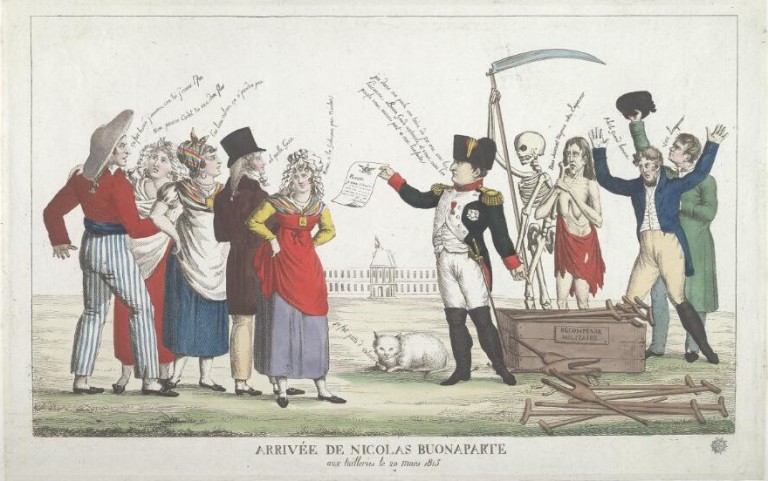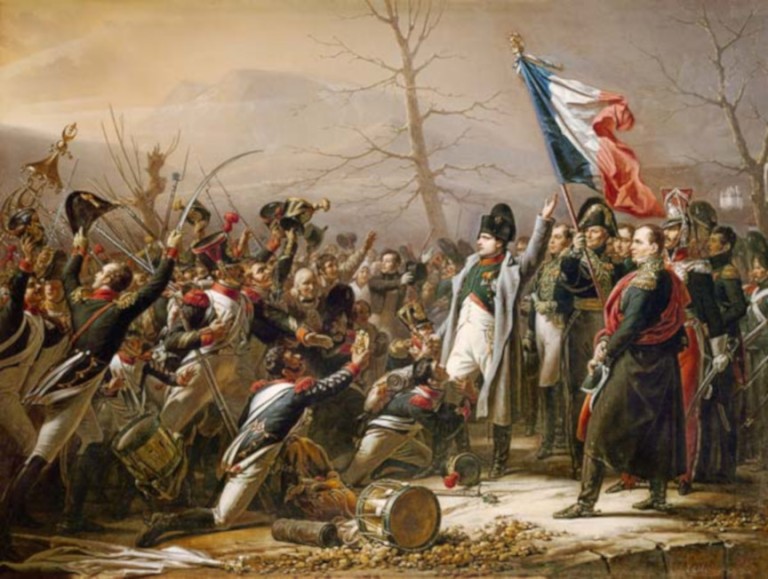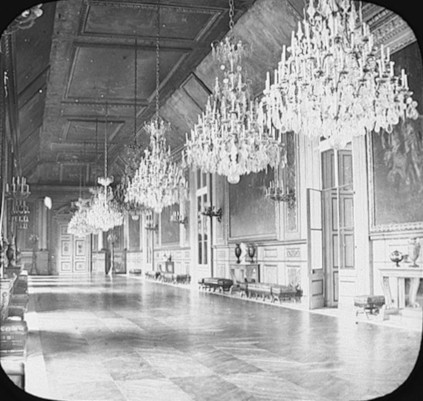In retellings of history, Napoleon’s brief return to power in the spring of 1815 is often portrayed as an audacious surprise, the ultimate comeback from an indefatigable historical personality. Actually it wasn’t. Having returned to Paris and run off the rickety reboot of the Bourbon monarchy, Napoleon immediately found himself faced with a dizzying array of insoluble problems. Chief among them was the fact that all the other powers of Europe had suddenly banded together and declared war on him. He would obviously have to fight to remain in power, but with France’s treasury empty and her manpower already drained from previous years of Napoleon’s wars, this time Bonaparte really didn’t have a second act. That raises the question: did he really think he was going to get away with it this time?
In this, the second of a three-part series on Napoleon’s final play on the world stage, Dr. Sean Munger counts the dwindling francs left in the French treasury, chronicles the treachery of Napoleon’s disloyal ministers who were plotting against him, and takes you into the rather tepid celebrity lunches that Bonaparte threw at the Tuileries Palace to try to make it look like he was the center of attention. You’ll learn about Napoleon’s drooling problem, why it’s a bad idea to ask fed-up troops who’ve already deserted your army once before to pretty-please come back and die for you once more, and why imperial coronation robes should generally not be worn more than once. This is a picture not of an audacious and incisive leader with one more trick up his sleeve, but more of a deluded narcissist totally out of gas and without a clue what to do.
Additional Materials About This Episode

[Above] Josesph Fouché, also known as the Duke of Otranto, Napoleon’s slippery police minister. Even before Napoleon came to power the first time, Fouché had a long history as a Jacobin radical during the French Revolution, who tried to abolish religion and was responsible for several horribly bloody massacres of innocent people in 1793 and 1794. This charming fellow ultimately survived the Hundred Days but was repressed when the Bourbons were restored. He died in exile in Italy in 1820.

[Above] A contemporary French cartoon depicts Napoleon’s return to power on March 20, 1815. Note the Grim Reaper standing behind him and the emaciated woman in rags, suggesting the ruin that Napoleon has in store for France.

[Above] A somewhat fanciful depiction of Napoleon’s return depicts him much as he appeared in 1812, with tricolor flags flying and jubilant soldiers throwing themselves at his feet. While some members of the French Army were glad to see their old commander return, many people in the countryside were less than enthusiastic. Napoleon tended to wear a plain green grenadier’s coat and cut a somewhat less majestic figure.



[Above] These rare photographs show the inside of the Tuileries Palace in Paris, where many of the events of this episode take place. After Napoleon, the palace was used again by the restored Bourbon kings and the July Monarchy (post-1830), and even by Napoleon III, nephew of the first French emperor who took power in the 1850s. The palace was deliberately burnt down during the Paris Commune of 1871 and the scorched remnants demolished in 1883, destroying a major part of 19th century French history.

[Above] Napoleon in his coronation robes as he appeared in 1804. His attempt to relive this glory by wearing the same outrageously ostentatious costume to his one public function in June 1815 was not well received by the people of France, and not just because they didn’t fit anymore.
